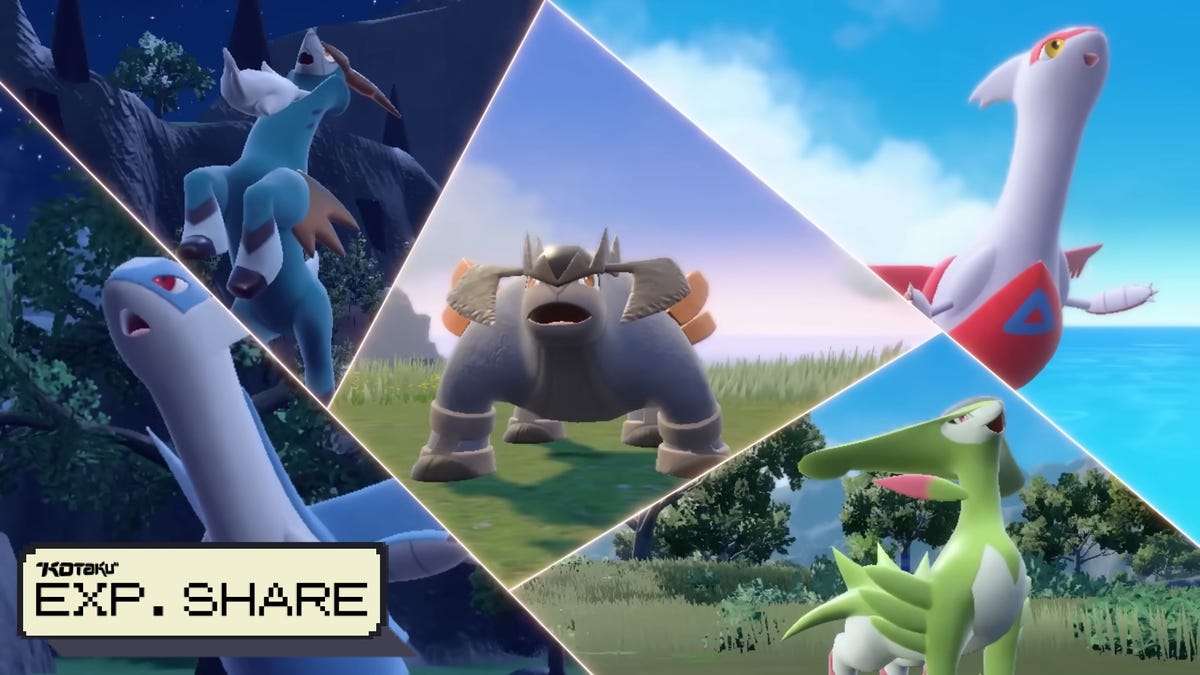Remember when finding and capturing a Legendary Pokémon felt special? You would stumble upon these powerful creatures whose stories were woven into the world’s history. The Mewtwo encounter in the original Pokémon Red and Blue is an incredible endgame payoff for a story that’s unfolding in the background the whole time. When you finally find it in the Cerulean Cave during the postgame, you understand how significant it is to stand in front of this all-powerful monster. However, in the time since, the series has increasingly broken its own lore to come up with silly excuses for why these god-like entities are available to be caught in subsequent games, and Pokémon Scarlet and Violet’s Indigo Disk DLC seems to be the latest to continue the trend.
What’s Coming Out Beyond Pokémon: The Indigo Disk | The Week In Games
Scarlet and Violet’s second DLC is adding Blueberry Quests, which allow you to capture a plethora of Legendary Pokémon by luring them out with treats. As hilarious and improbable as it is to imagine putting out a bunch of TetraFin flakes in hopes that Kyogre, the Pokémon god of the sea, will stumble upon a little snack, it’s apparently effective. Blueberry Quests have already been confirmed for nearly every Legendary Pokémon that isn’t already in the games through a previous update.
Buy The Hidden Treasure Of Area Zero: Amazon | Best Buy | GameStop
This kind of arrangement has become pretty standard in Pokémon games in recent years. With every implementation of a new gathering ground for Legendary Pokémon, the in-universe explanation for why it exists has gotten less believable. Sword and Shield has the Max Lair, for instance, which is essentially a tourist attraction for trainers to find and capture Legendary Pokémon. For some reason, a bunch of the masters of the natural elements of the Pokémon universe decided to gather in a cave system in the Galar region.
Brilliant Diamond and Shining Pearl have a similar contrivance with Ramanas Park. This facility has designated rooms where you can place purchased slates that summon Legendaries for you to capture. I understand why these workarounds exist—after all, each of these characters has an established backstory that means they wouldn’t naturally show up in different regions—but seeing how commodified these encounters have become when they were once world-shattering events has never sat well with me.
It doesn’t always have to feel this manufactured or commercialized. Omega Ruby and Alpha Sapphire created Mirage Spots, which were portals to other places and times that appeared all over the Hoenn region from which Legendary Pokémon would emerge. Sure, it was just as contrived, but it was more believable than “Pokégods all showing up in the same place that humans had made into a publicly accessible entertainment facility.”

Welcome to Exp. Share, Kotaku’s Pokémon column in which we dive deep to explore notable characters, urban legends, communities, and just plain weird quirks from throughout the Pokémon franchise.
On a basic game design level, it makes sense for Pokémon games to have these Legendary monster closets. Legendary Pokémon often make up the bulk of a tier of competitive play, and if only a few of them are available, entire swaths of competitive meta become obsolete or at least very limited. Plus, even with cuts to the Pokédex in each game, it is still in the spirit of Pokémon to want to capture and collect as many of the critters as possible. But speaking as a person who has largely stopped caring about catching every Pokémon in favor of exploring the world alongside my favorites, watching Legendary Pokémon go from climactic, contextual encounters to the subjects of artificial, often world-breaking sidequests has gotten increasingly tiresome.
Legendary Pokémon are often tied heavily to the place we first meet them. Mewtwo was a genetic experiment gone awry that fled to the depths of Kanto’s most dangerous dungeon in Red and Blue. Ho-oh’s story as the ruler of the Legendary Beasts all came back to the Burned Tower in Johto’s Ecruteak City. Reshiram and Zekrom were central to conflicts within the Unova region between local heroes. But despite their roles in this universe, somehow, each generation they all find their way to whatever region we’re playing in so we can put them in spherical prisons and mark them down in the Pokédex.
I understand why Game Freak keeps doing this, and really, I shouldn’t be surprised that Pokémon isn’t able to maintain a cohesive world state as it adapts, retcons, and explains away why certain truths we learned in past games no longer apply in new ones after all these years spent adding to the world. But mechanics like Blueberry Quests are the most blatant examples of how worldbuilding and narrative will always come second to the competitive meta and Pokémon fans’ incessant need to catch ‘em all.
Buy The Hidden Treasure Of Area Zero: Amazon | Best Buy | GameStop
.
